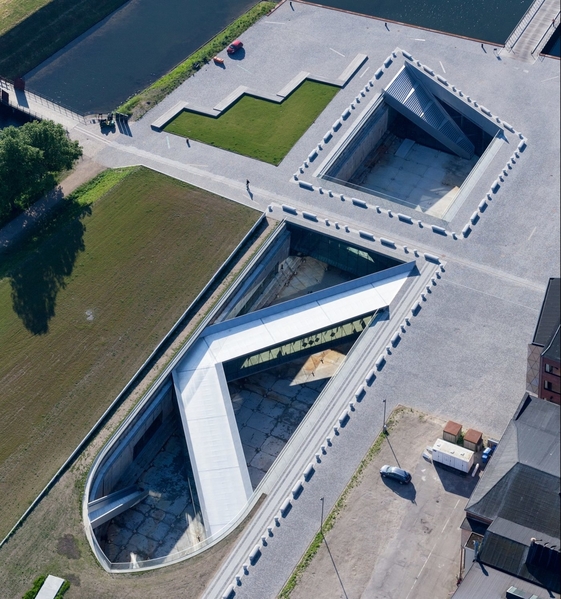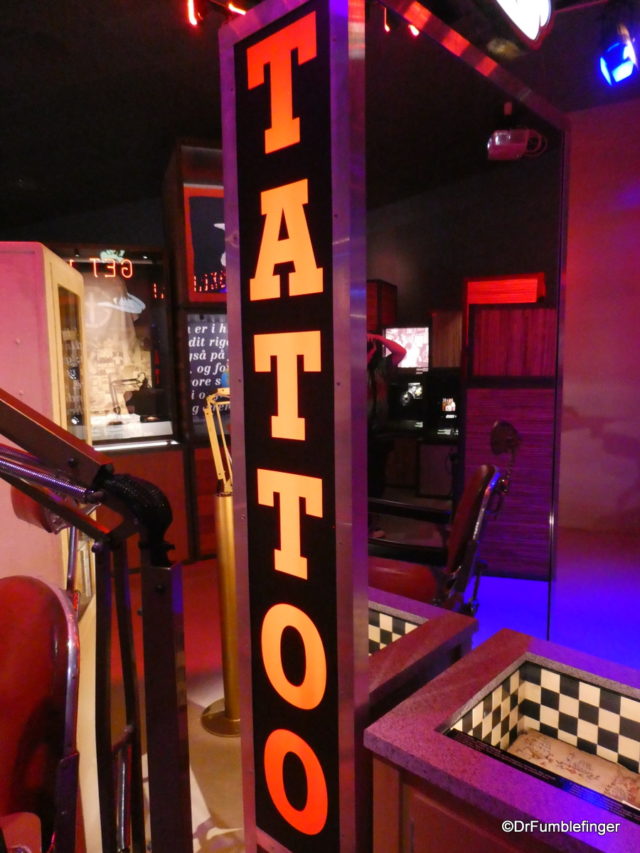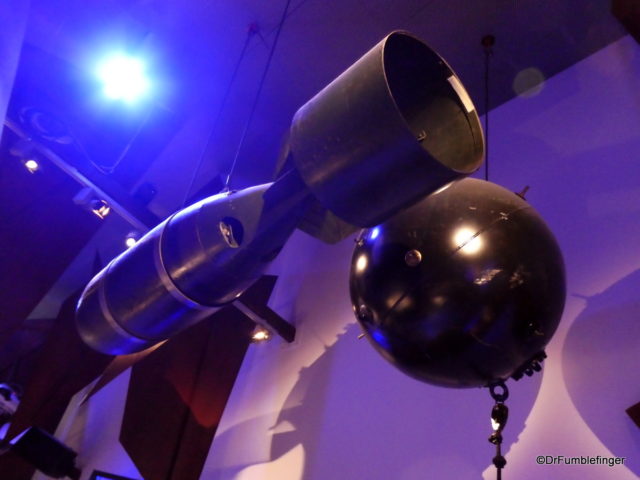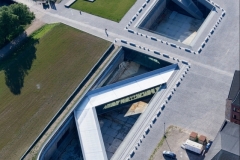
It’s a little hard to see Denmark’s Maritime Museum until you almost fall into it because it’s located entirely below ground level, having been built into an old dry dock. Because nearby Kronberg Castle is a UNESCO World Heritage site, approval for construction of the museum mandated that it in no way obstruct views of the castle, — hence this novel approach to its unusual architecture (which has won numerous awards over the past few years). The Museum opened in 2013, its collection having previously been housed within Kronberg Castle.
You descend into the museum, pay a lofty admission (typical it seems of everything in Scandanavia, although admission is included with the cost-effective Copenhagen card), then you can begin your exploration. 600 years of Danish naval history unfold here and the museum’s displays progress in a thoughtful and engaging manner. Because only the past 600 years are covered, there’s nothing on the colorful Viking era which preceded this, although there are other places in Denmark where you can experience Viking history.

Aerial view of the Maritime Museum. Photo Courtesy Maritime Museum of Denmark
The first exhibits look into aspects of sailors lives, and life as a sailor. The exhibits included items of general public interest ranging from toys to tobacco to movie memorabilia.
Some of the exhibits are of a personal nature, including the high rate of tattoos amongst sailors (and today it seems almost everyone under age 30), a look at how the sex trade targets sailors (and visa versa), including the high rate of sexually transmitted disease this brings about. There’s a rather interesting collection of gifts sailors had acquired abroad and brought home to their families and sweethearts.

Tattoo exhibit, Maritime Museum
The lives of captains is presented, beyond their duties of supervising the sailing of ships. A rather extensive group of exhibits looked at how ships were navigated in past centuries, before the arrival of GPS, a sampling of which is included below.
A portion of the museum includes exhibits based on naval experiences during the first and second World Wars. This contained some interesting artefacts, like torpedo’s, mines and guns….

Part of the war exhibit, Maritime Museum
There are dozens of beautifully detailed models of ships scattered throughout the museum, dating from the era of sailing ships to the massive cargo carriers that are so important to world commerce today.

One of many ship models, Maritime Museum
There is much more to see, but this post contains those things that captured my attention. For example, there are also exhibits on lighthouses and shipbuilding.
The museum also has thousands of paintings and photographs, and a maritime library with over 20,000 volumes (most of these are housed at a remote site). There are teaching facilities, a nice café, children’s play areas, and conference and banquet facilities.
(Click on thumbnails to enlarge, right arrow to advance slideshow)
